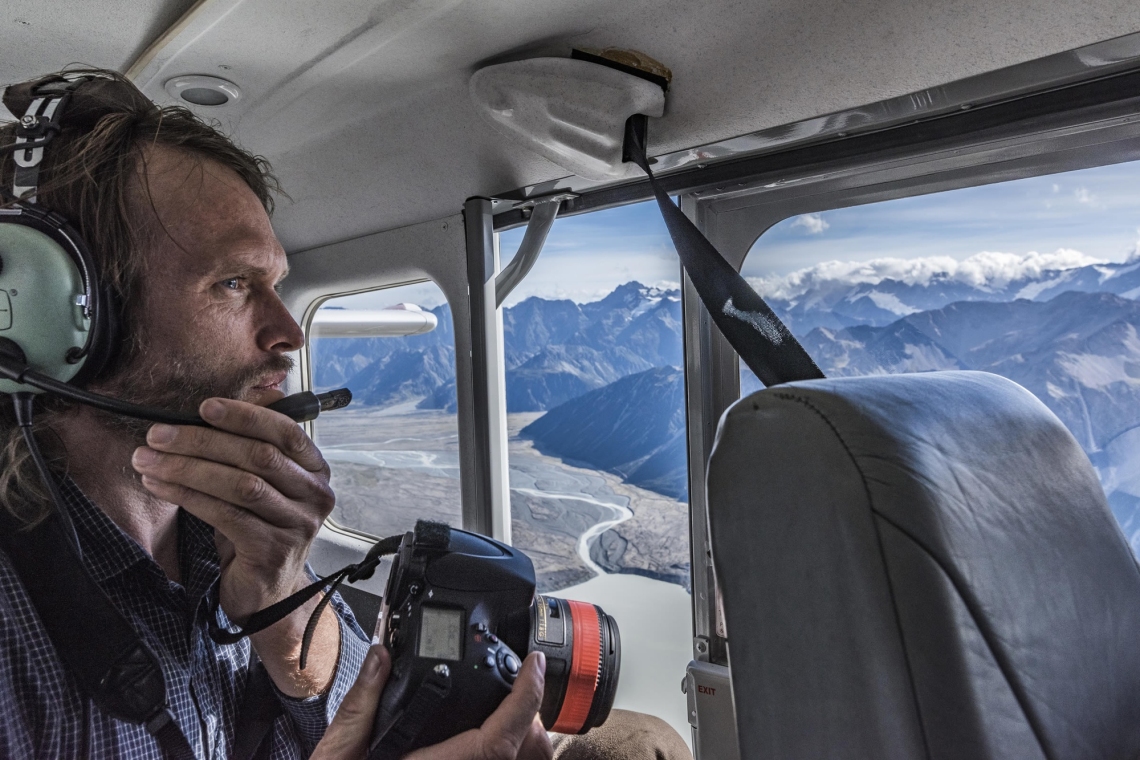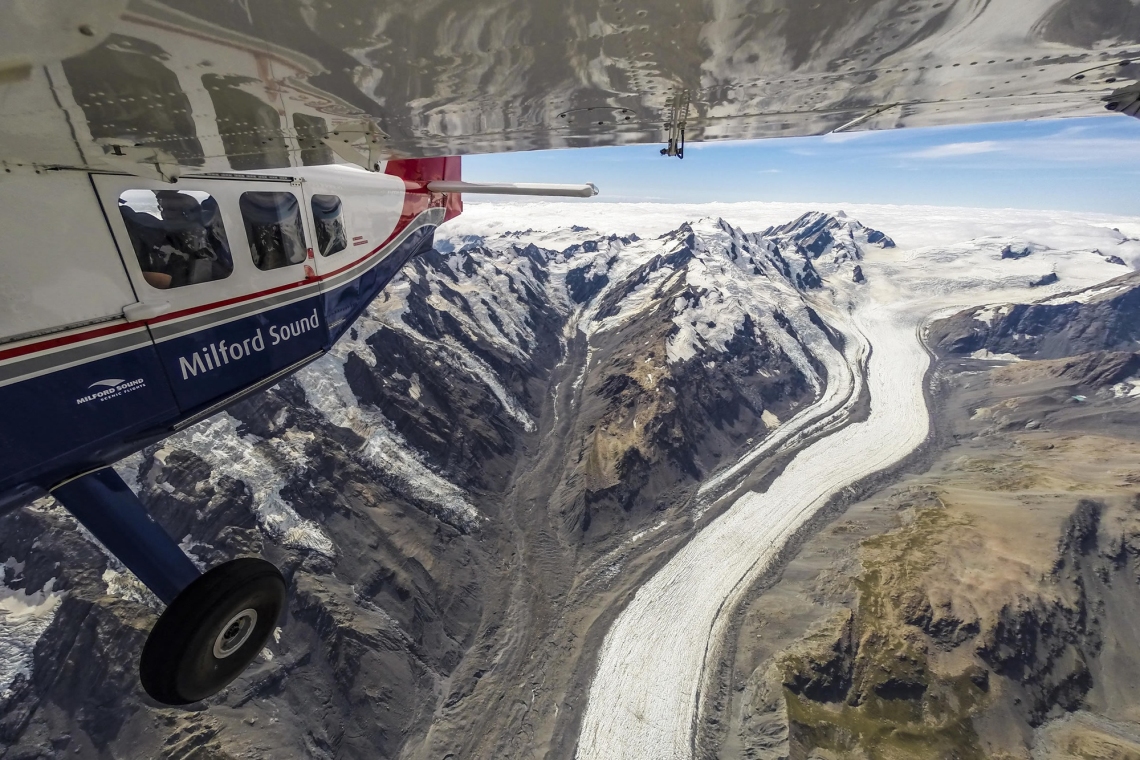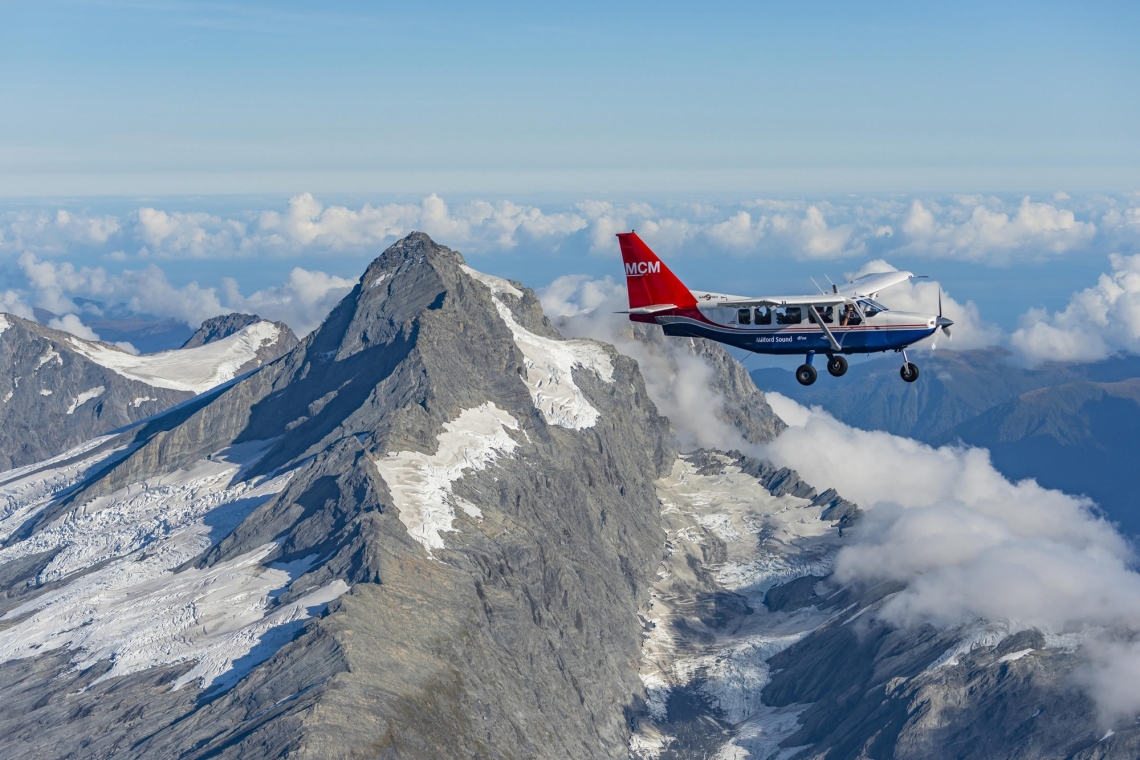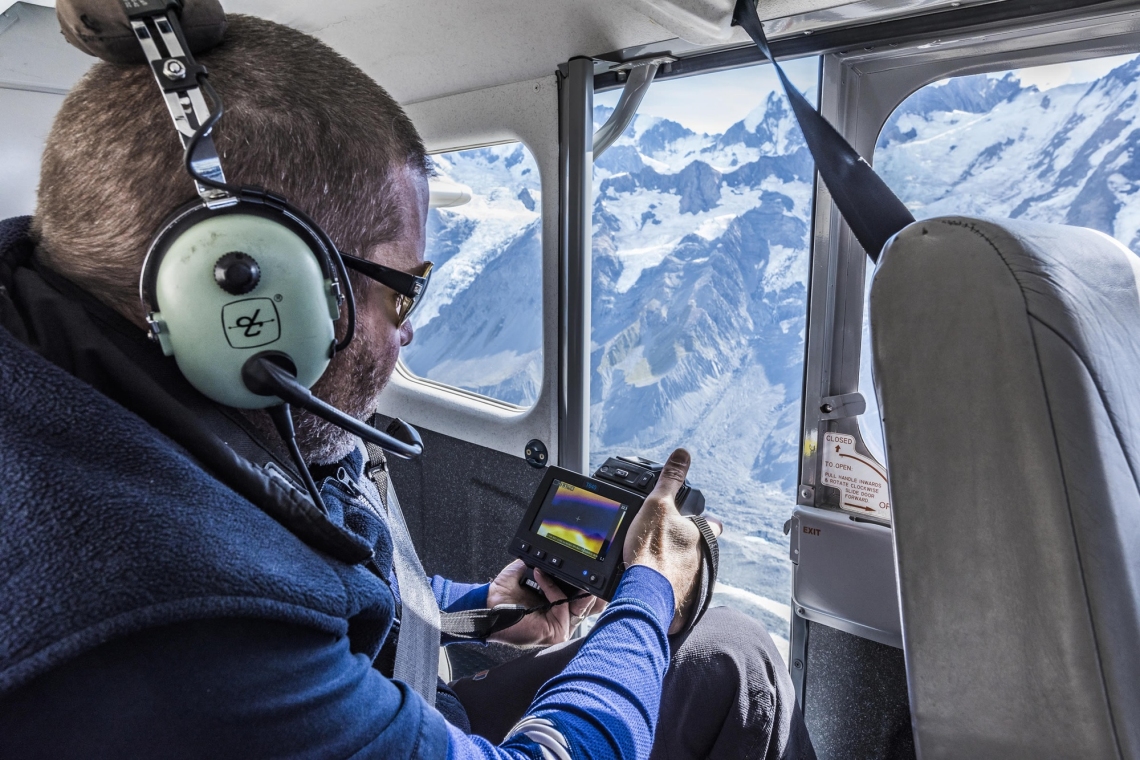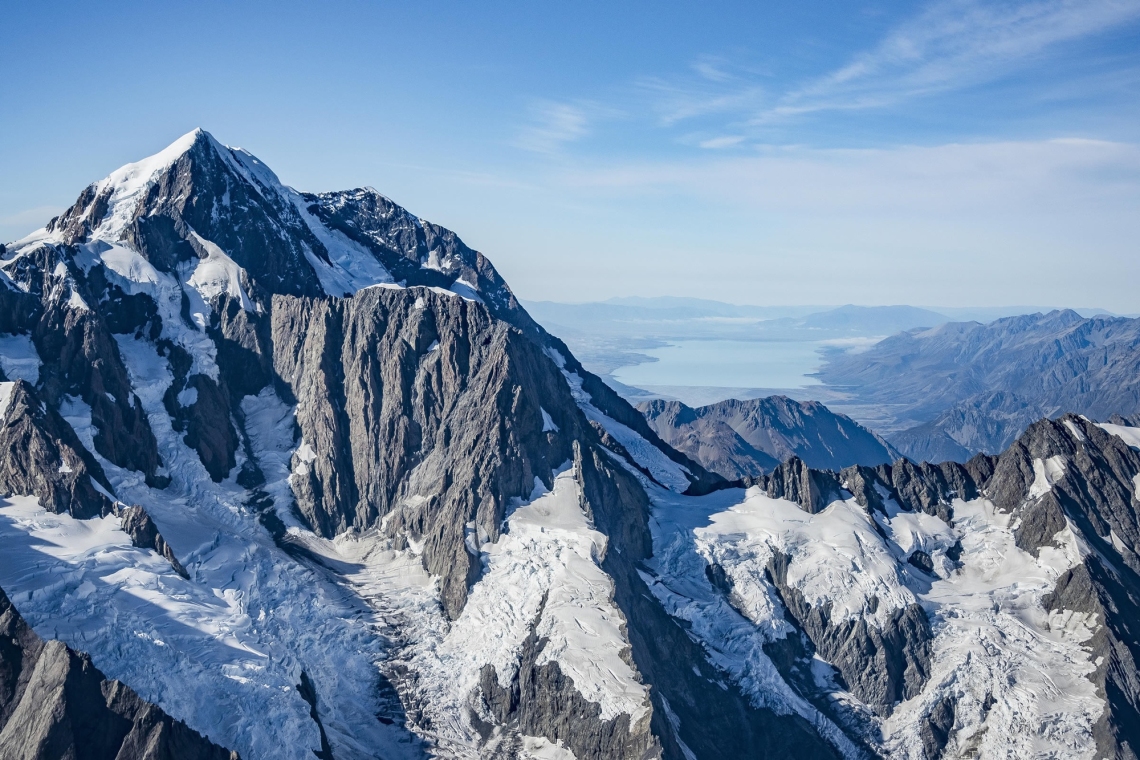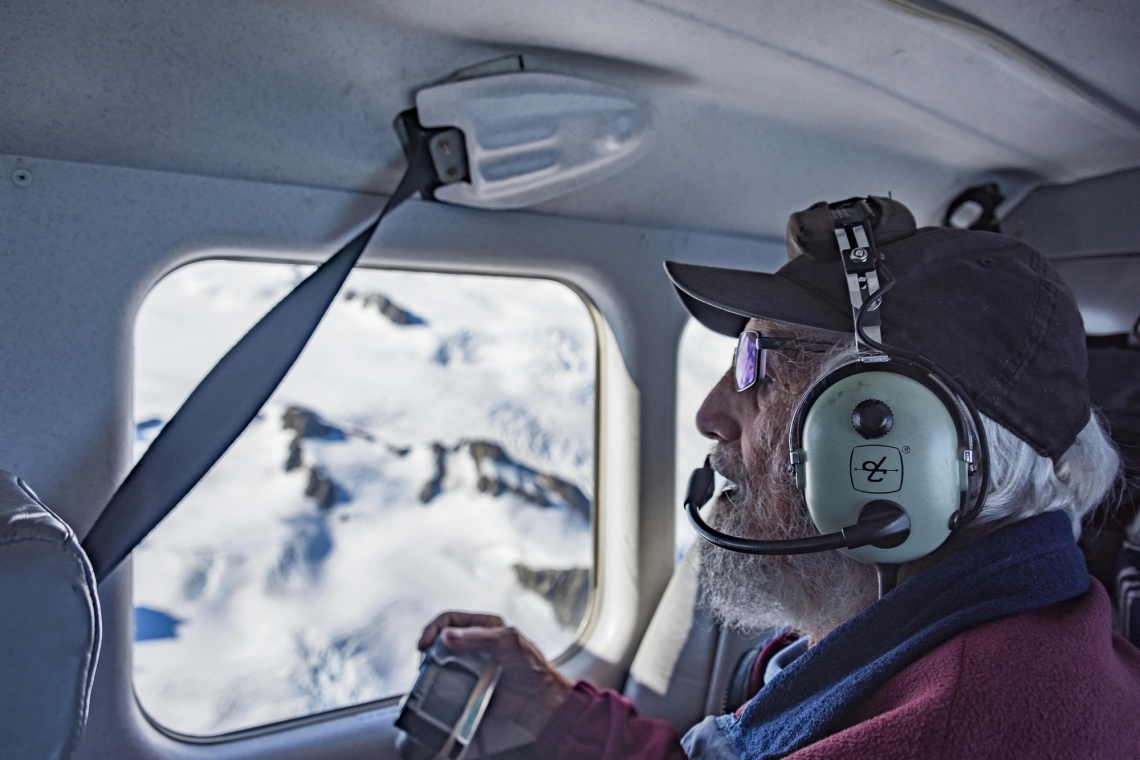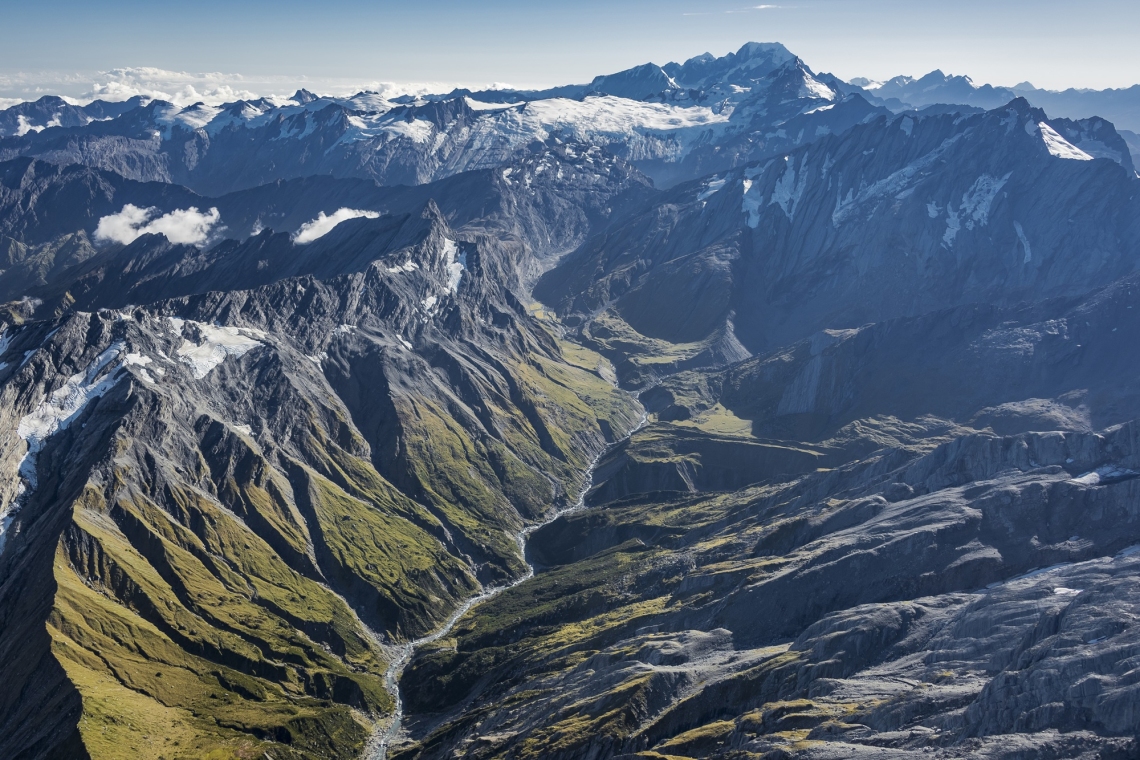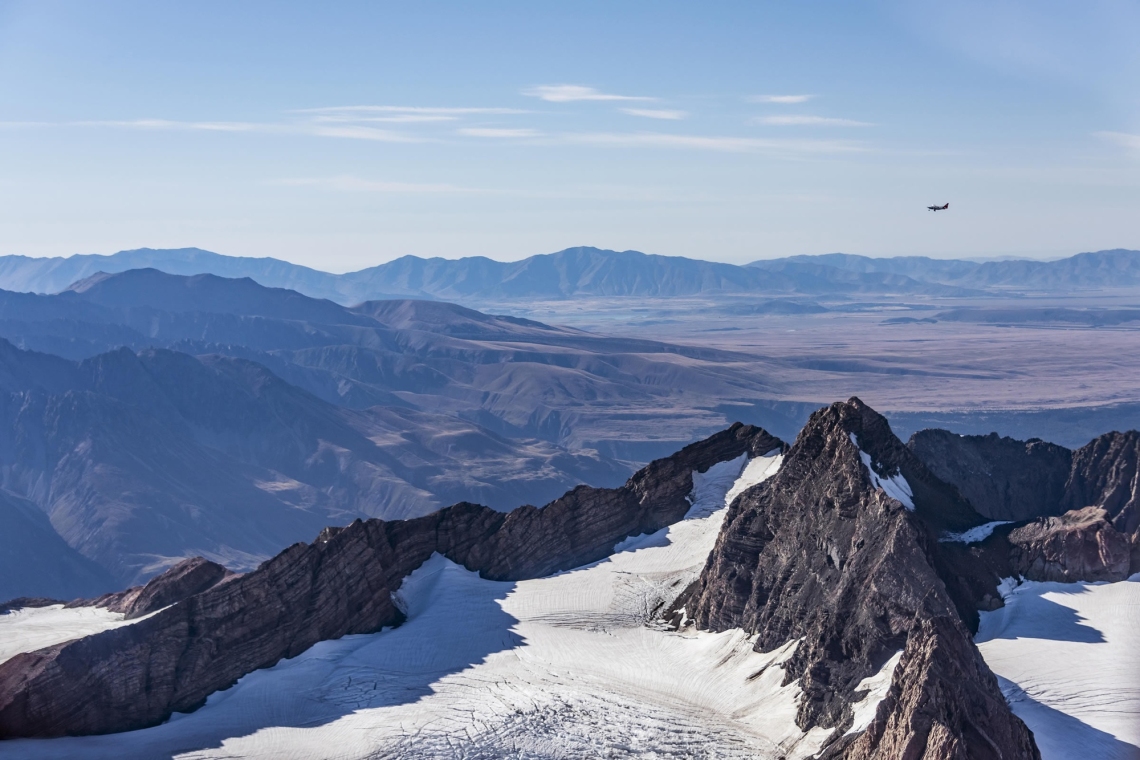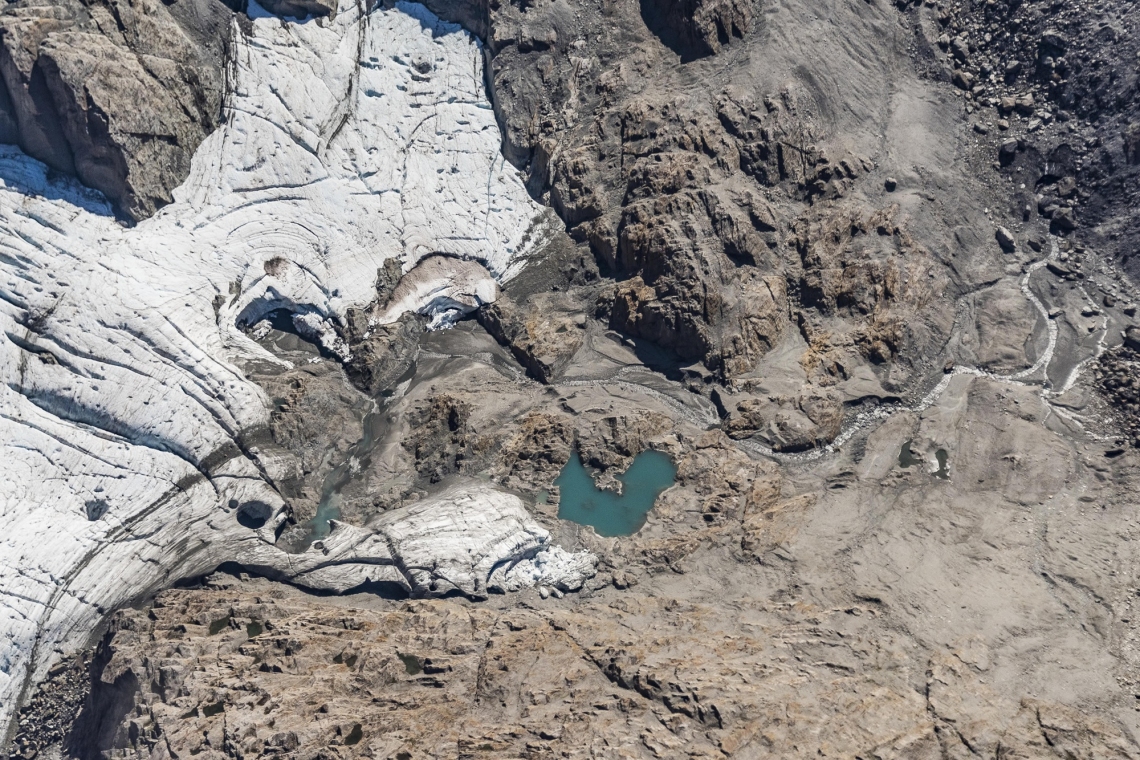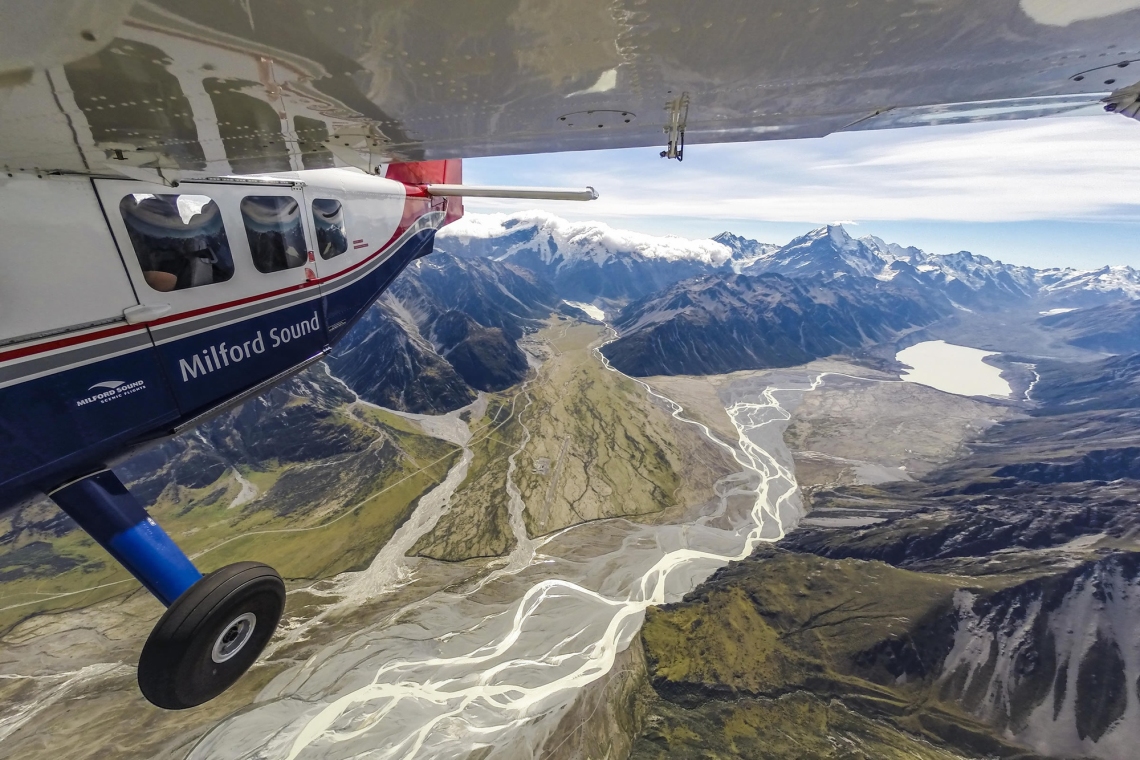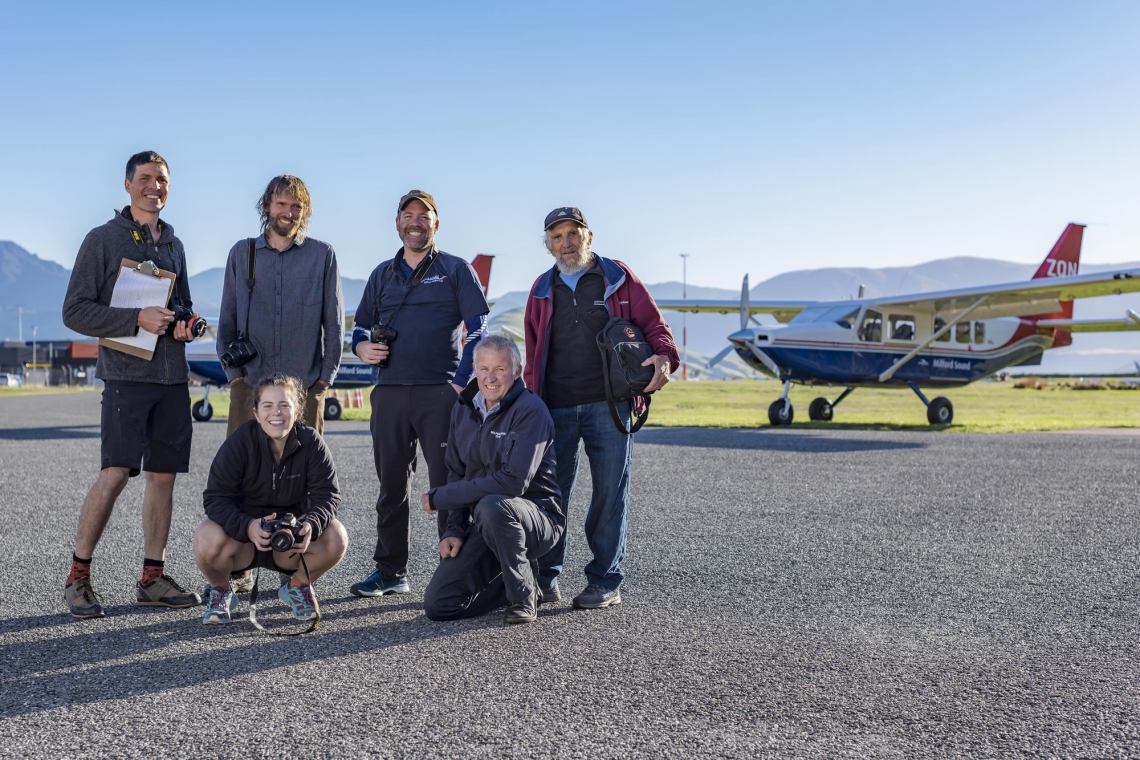NIWA has carried out aerial surveys of over 50 of the South Island’s glaciers every year for more than four decades.
The surveys record the snowline on the glaciers at the end of each summer and provide a time line of glacier-climate interaction stretching back to 1977.
Look at the results of the 2018 survey – carried out after New Zealand's warmest summer on record.
The surveys are carried out by hand-held oblique photography taken from light aircraft. Both the absolute and relative positions of the snowlines are recorded.
Glacier snowline altitudes, also known as Equilibrium Line Altitudes or ELAs, provide a direct value for annual glacier health.
They tell how much of the previous winter’s snow remains at the end of summer to contribute to long-term glacial ice. The higher the ELA, the less winter snow remaining, indicating the glacier has decreased in size. If the ELA is lower, a larger amount of winter snow remains and the glacier has increased in size (Willsman et al., 2015).
For more information on the End of Summer Snowline Survey see the Snow and Ice Research Group webpage.

